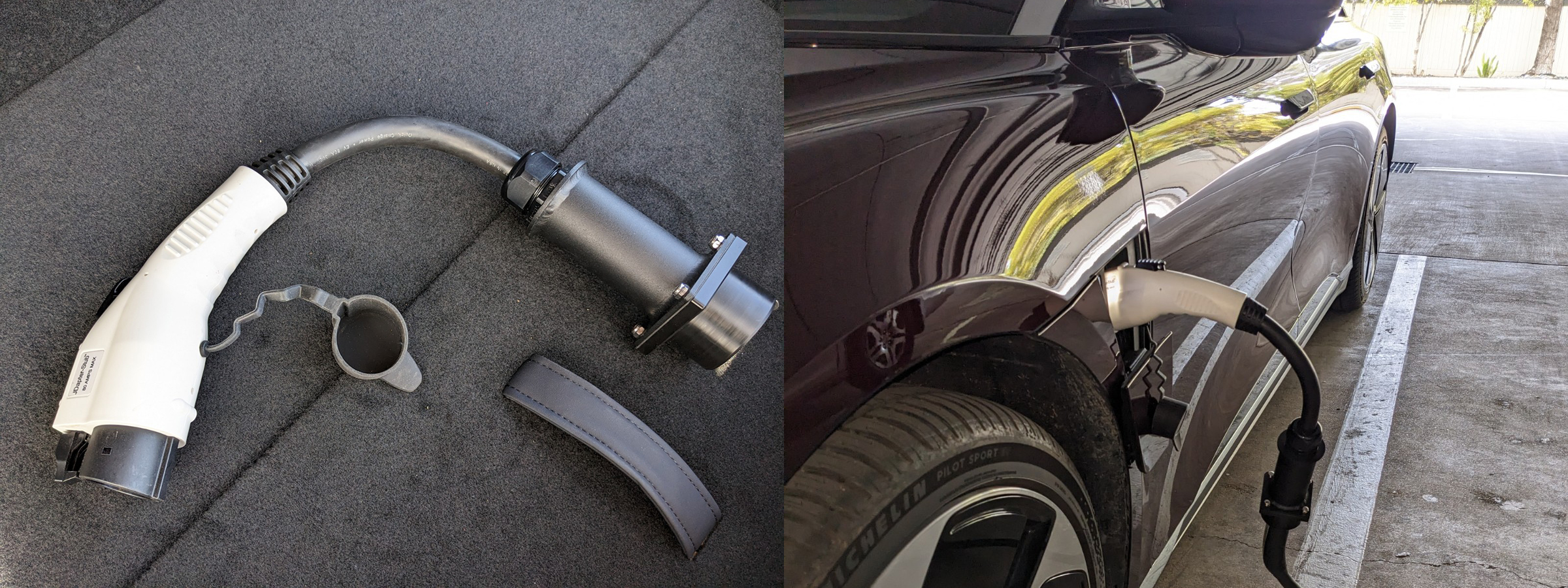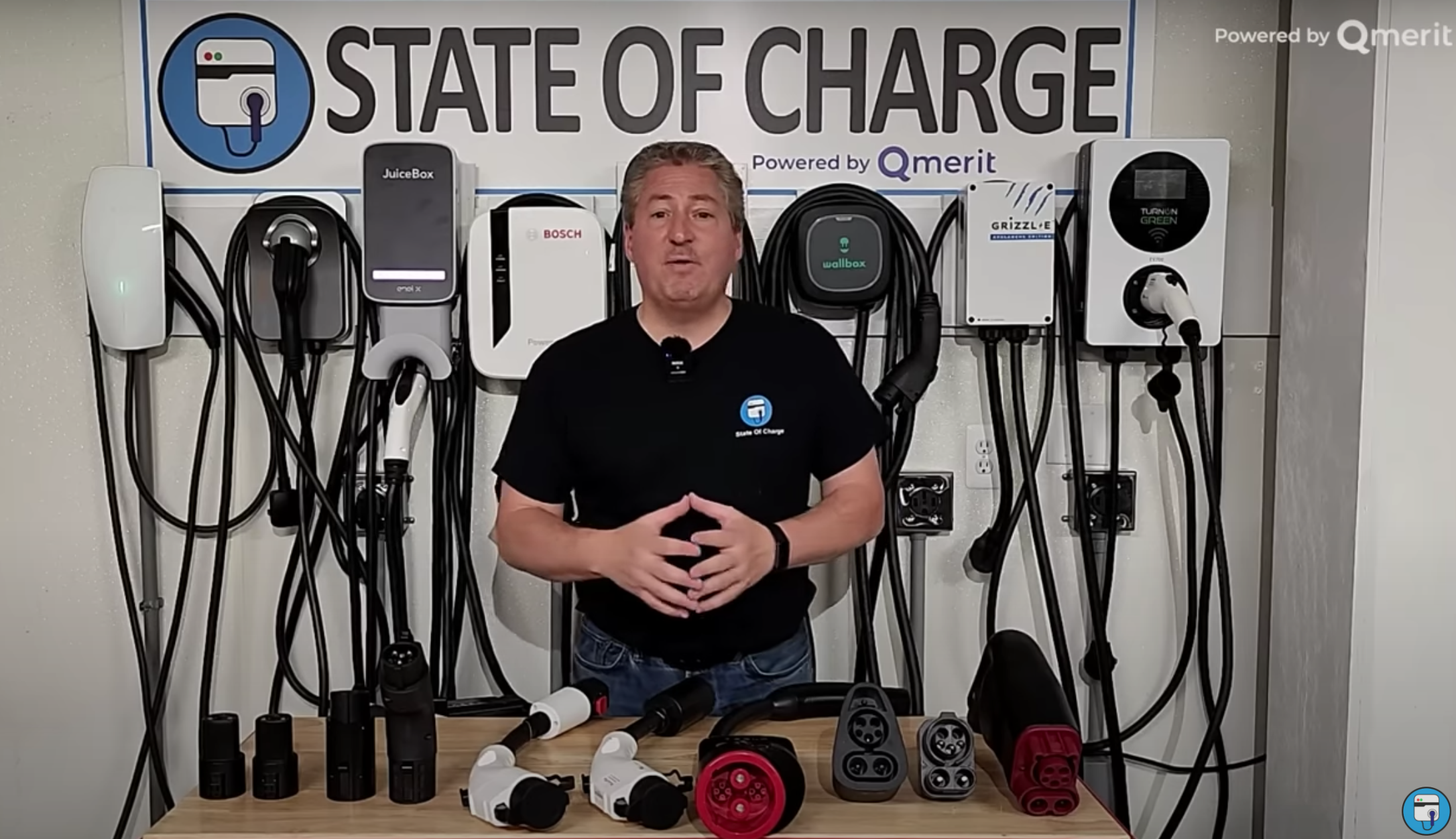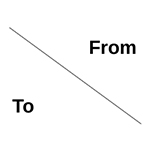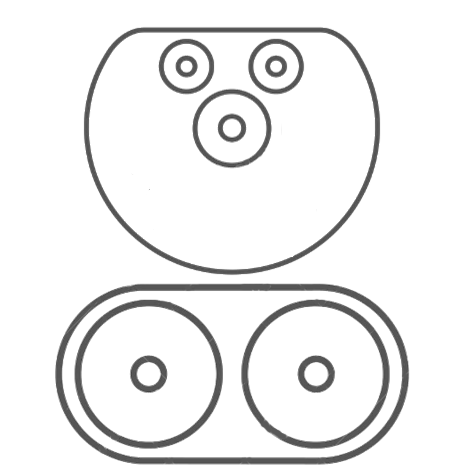TL;DR
Adapters for Level 1 & 2 AC chargers (both to and from Tesla and J1772) are relatively inexpensive and can give you flexibility when using public charging infrastructure. Extension cables can be a bit more pricey but also invaluable when flexibility is needed. Adapters for DC fast charging are more expensive and problematic. Extension cables for DC charging are technically possible but not commercially available– primarily due to cost. Care needs to be exercised not to exceed the power level of the adapter of the cable, or else expensive damage will occur.
The Nitty Gritty Details of EV Adapters
Tom Moloughney’s State of Charge YouTube channel has a video explaining this topic in detail, and I will not add any new information here that you can’t learn by watching it. However, the following table can be handy as a quick reference guide. Since the table can only hold so much text, I’ll go into more extensive detail for most cases below.
Combinations of Common EV Adapters and Charging Standard Types
Table showing all possible combinations of adapters between the world’s most common charging standards.
Extension Cables
Extension cables are mentioned along the table’s diagonal and are very common and highly recommended if you need charging flexibility. Personally, I always travel with an extension cable and a couple of common adapters for those unexpected occasions. Think of it as insurance against being stranded – you rarely need it, but when you do, nothing else suffices.
But there are a couple of essential points to consider. First, extension cables are for AC charging only. Extension cables for DC fast charging (DCFC) are technically possible to manufacture but would be prohibitively expensive. It’s safe to assume that you’d put out $200 per connector on each end and about $10 per foot for a DC extension cable. Furthermore, a DC extension cable would probably be limited to 50 kW because the higher power DCFC have liquid-cooled cables – something impossible to replicate in an extension cable.
The second point is to be sure that the extension cable (or any adapter) isn’t the weak link in your charging. If your car and EVSE are capable of charging at 9.6 kW (40A), you don’t want to be charging using an extension cable limited to 7.2 kW (32A). Here is an example of a J1772 extension cable sold by Amazon. I’ve never seen a Tesla extension cable sold by Tesla, but Lectron sells a version of their own on Amazon as well.
CCS Type 1 & 2 and CHAdeMO to AC Adapter
You’ll note that several spots on the table contain entries that simply say “not supportable.” No simple adapter will go from a DC source to an AC inlet. It just doesn’t make sense.
Cross Market DC Adapters
There are also several table entries that are marked “unsupported use case.” These might be desired if you, for example, imported an EU-spec car to the North American market or a North American-spec car to Japan. CHAdeMO to CCS Type 1 or 2 and visa-versa is possible, but it would be expensive to develop and not commercially viable due to their specialized use cases. Someone may make such a cable, but I didn’t research it. If anyone were to import such a car, it would make far more sense to me to have the car retrofitted.
From Tesla to J1772 Adapter
In my way of thinking, this adapter is in the “don’t leave home without it” category, for those that remember the American Express commercials from the 1970s. It is really useful to have when you need to charge your J1772-compatible car using a Tesla destination charger. When I travel, I often research hotels with Tesla destination chargers and bring this adapter so I can have a fully charged car in the morning.
Ensure that any adapter you purchase isn’t the weak link in your charging. If your car and the destination charger can charge at 9.6 kW (40A), you don’t want to use an adapter limited to 7.2 kW (32A).


My “don’t leave home without it” Tesla to J1772 adapter allows you to charge your J1772 standard EV with a Tesla Level 2 charger, which is becoming increasingly common to find at hotels. There are sleeker adapters available now, but at an 80 amp rating, this old workhorse will take anything I can throw at it. Photo credit: John Higham
From Mennekes to J1772 Adapter
This would represent an unusual need case, but these adapters do exist and can be found on Aliexpress and eBay. It would be necessary for a car with a J1772 socket (typically sold in North America, but also in Japan) that needed to be charged with infrastructure common in Europe. One example is the early Jaguar I-Pace. When sold in the EU, it came with a J1772 socket, although later model years in that market changed to Mennekes.
From J1772 to Tesla Adapter
This adapter comes standard OEM on every Tesla sold in North America. It’s useful to charge your Tesla using public (or home) EVSEs using the now ubiquitous J1772 standard. This adapter is also widely sold by third-party vendors.
From Mennekes to Tesla Adapter
Since 2019, Teslas sold in the European Union (EU) have come equipped with the Mennekes (and CCS Type 2) socket. But before that model year, EU Teslas had the proprietary plug, and anyone driving such a car would need this type of adapter to use the local public charging infrastructure. That said, the need for this plug will diminish with time as older cars are retired.
From CCS Type 1 to Tesla Adapter
This is a DCFC adapter and is used to charge your Tesla using the CCS standard in North America. This adapter is sold in the Tesla store and by third-party vendors.
From CCS Type 2 to Tesla Adapter
This is a DCFC adapter and is used to charge your Tesla using the CCS standard in the EU. Unfortunately, its usefulness may be coming to an end now that Teslas shipping there have the CCS Type 2 socket as the standard OEM instead. This adapter may still be useful for older models sold in the EU prior to Tesla embracing the continent’s standard (or even for North American cars shipped to the EU). They’re hard to find in North America, but available on eBay and from third-party vendors.
From CHAdeMO to Tesla Adapter
This is a DCFC adapter used to charge your Tesla using the CHAdeMO standard. There are still plenty of CHAdeMO DCFC in North America, even though it appears the standard has been abandoned here (although it is still the de facto standard in Japan). Tesla once sold this adapter, but it appears to be no longer available. This adapter also seems to be becoming a bit of a unicorn by third-party vendors, although you can occasionally find them on eBay.
From J1772 to Mennekes Adapter
This is another niche adapter like others that bridge markets. I have seen this adapter used when EU-spec EVs are brought to car shows in North America.
From Tesla to Mennekes Adapter
As with the J1772 to Mennekes, an EU-spec EV can be charged using a Tesla plug, but this adapter would only satisfy a small and specific use case.
From Tesla to CCS Type 1 Adapter
This adapter personally captured my imagination since it would be invaluable to people like me who travel with their CCS Type 1 EVs and would be willing to pay a premium to use Tesla’s Supercharger network. Unfortunately, you can’t buy one.
To be clear, this adapter would be straightforward to manufacture, but since Tesla authenticates every car that plugs into its proprietary network, such an adapter would have to be licensed by Tesla. And they haven’t done that. Yet.
Yet there is a crack in the dam. As of this writing, Tesla has made an agreement with the US Government to do just that – to open up their network to CCS Type 1 EVs. In return, Tesla gets IRA funding to build out its network further.
Anyone who has used Tesla’s Supercharger network and has also used other networks (either CCS or CHAdeMO) will have to agree the Tesla units just work better – at least when charging Tesla cars. It remains to be seen if Tesla’s sparkly reputation in this arena will remain intact once it has to support everything from a Porsche Taycan to a Chevy Bolt. But I suspect they will, and such competition can only benefit consumers.
Again, as of this writing, there is only a commitment to open up the Supercharger network. And while no adapters are available, at least one third-party vendor is taking pre-orders.
It is also possible that no adapter will ever be sold – Tesla is holding all the cards and keeping them close to their chest. What is known as of February 18 is that Tesla stations will have a CCS adapter integrated into them, and if a Tesla pulls in wanting to charge, the CCS adapter stays locked into place. Otherwise, when other EV drivers come to charge, the adapter will unlock. This concept is known as the Magic Dock, and what is known about it is described in more detail here.
From Tesla to CCS Type 2 Adapter
This adapter would be used to charge a Tesla with a proprietary plug using the EU CCS Type 2 standard. This need was largely overcome once Tesla embraced the Type 2 standard for cars shipped to that market. But this adapter is available for earlier Teslas, as well as any North American cars that have been shipped to the EU. Some vendors market this adapter, but since quantities are low, prices are high.
A Word of Caution
Think back to the very first column I wrote here on EVChargingStations.com – how the car and the EVSE/charger communicate with each other, and the car controls the incoming current. Always.
If an adapter or extension cable is used, the car is still in communication with the EVSE/charger. This communication passes straight through the adapter, and neither the car nor the EVSE/charger are aware of it.
It is mission-critical that the adapter or extension cable is not the weak link. If the car requests 480 amps and the charger responds with 480 amps, but the adapter is only suitable for 32 amps, something will melt – or worse, catch fire.
So while adapters and cables enable a lot of flexibility, care must be taken so your charging experience doesn’t end up featured on CNN.
Next week’s column will examine the (in)famous Guess-O-Meter.















0 Comments